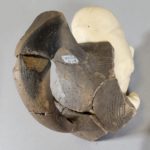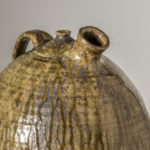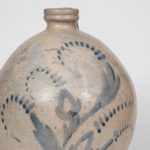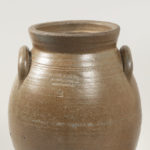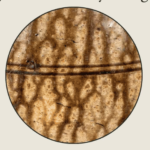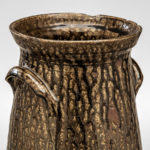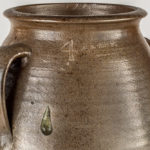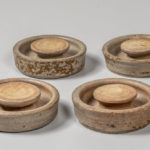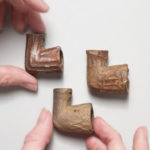Coming Together: Choctaw Cup with Handle

Cup with handle (mended)
1760-1780
Member of the Choctaw Nation
Excavated from Rochon Plantation, Baldwin County, Alabama
low fired earthenware (colonoware)
University of South Alabama Archaeology Museum
Choctaw and Choctaw speaking peoples have been creating pottery for over 100 generations in what we now call Alabama. Most Choctaw potters were women. With the arrival of European colonists, the potters began to create forms appealingly familiar to this new group of consumers. Pots were traded individually or as containers for foodstuffs.
This partially reconstructed vessel with handle was excavated by archaeologists from a British colonial plantation site near Mobile. Unlike the other objects in this exhibit, it is made of low-fired earthenware. Earthenware created by artists of Indigenous or African descent in European forms is sometimes referred to as “colonoware.” The cup is a European form but was produced with traditional methods and incorporates traditional decoration. The female potter used a broken fine-tooth comb to create the curving linear pattern commonly found on Choctaw ceramics.
Today, a vibrant community of Choctaw ceramists continue to produce pottery in Oklahoma, Mississippi, and Louisiana.

